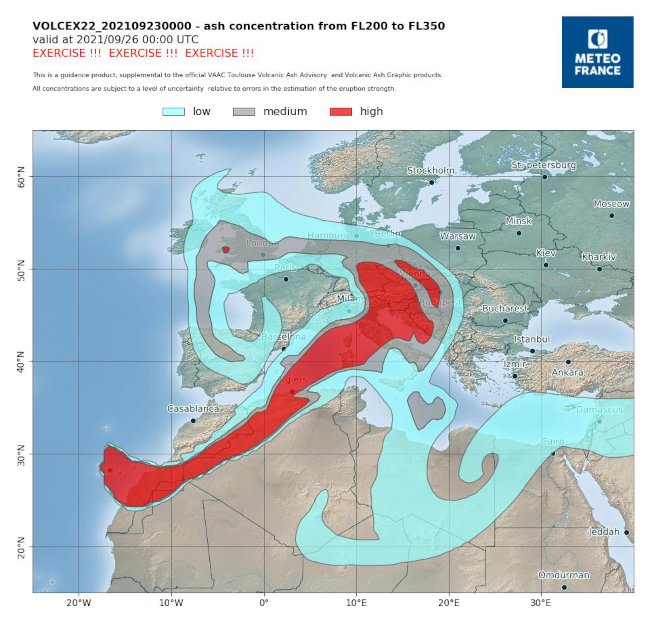The VOLCEX21 Debrief, VOLCEX22 Planning and VOLCEX/SG/16 Meetings were held virtually on 2, 3 and 11 February 2022. The meetings were attended by a total of 142 participants from 38 States, 4 Airlines and 5 International Organizations. The objectives of the meetings were to 1) develop recommendations from the volcanic ash exercise conducted on 16 November 2021 called VOLCEX21 and 2) consider these recommendations in the objectives of the volcanic ash exercise that will be conducted on 17 November 2022 called VOLCEX22.
One significant achievement observed in VOLCEX21 was that no States that participated in the exercise closed their airspace, which is the first time since these exercises began over a decade ago. This proved that States have adopted the acceptance of the Safety Risk Assessment (SRA) approach provided by operators, which is in accordance to the Volcanic Ash Contingency Plan for the EUR/NAT Regions. Routinely conducting volcanic ash exercises is essential because stakeholders continue to improve their readiness for a real volcanic ash event.

On 17 November 2022, VOLCEX22 will exercise a volcano called Pico del Teide located in the Canary Islands of Spain. The plume is expected to impact a large area including the Maghreb, Mediterranean as far east as the Levant, Europe as far east as the Balkans and as far north as the North Sea.

Furthermore, testing the Dynamic Airborne Reroute Procedure (DARP) is a new VOLCEX22 objective. Training of ATC on the use of Controller Pilot Data Link Communications (CPDLC) loadable uplinks to re-route multiple aircraft in real time is a necessary component of DARP. This will mitigate the potential for human error in the flight deck and reduce ATC workload as well as provide a safer airspace.
Downstream Flight Information Region (FIR) coordination between Air Navigtion Service Providers (ANSP)s – including Network Manager for those eastbound flights that exit oceanic airspace at a different oceanic exit point – will prevent route discontinuities in the aircraft Flight Management System (FMS). This is vital in the event of a loss of communication scenario, since both ATC and pilots must know what the route expectation is downstream.
